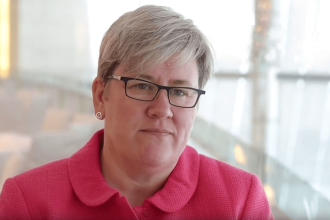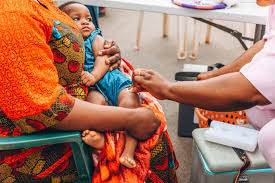By Lenah Bosibori
Road deaths are rising faster in the African region than anywhere in the world, accounting for a 17 per cent increase since 2010 according to a World Health Organization (WHO) report released in Nairobi on Tuesday.
Further, the report shows that in the WHO African Region, an estimated 225,482 people died from road traffic injuries in 2021, representing 19 per cent of the global burden of deaths. Even though the African Region accounts for only 15 per cent of the global population and only three per cent of the global vehicle fleet.
Speaking during the launch of the Report dubbed “Status Report on road Safety in the WHO African Region’ Dr Abdourahmane Diallo WHO Representative to Kenya said that Road clashes are the leading killer of children and youth and they typically swipe during the most productive years causing a huge health social and economic harm for the society.
“Road clashes remain a persistent health crisis with pedestrians, cyclists and other vulnerable users facing a rising risk of death, the risk of death is higher in low-income countries,” said Diallo.
Vulnerable road users such as motorcyclists, cyclists and pedestrians account for half of all fatalities according to the report. “Fatalities among motorcyclists have doubled in the past 10 years, increasing faster than any other WHO region,” read part of the report.
While progress has been made, many countries in the region still face challenges in implementing effective road safety measures; the rapid increase of motor vehicle registration particularly of used vehicles necessitates strong regulations of vehicles to ensure safety according to Diallo.
On his part, George Njao Director General National Transport and Safety Authority (NTSA) said that as a country they are concerned that the number of pedestrians knocked every day is very high causing a high number of injuries.
Dr Isaac Bashir Director for Family Health at the Ministry of Health who represented the Principal Secretary (PS) ministry of Health said that lack of harmonized data from the health sector and the police, underreporting and poor-quality data are some of the reasons for the adoption of ineffective options instead of investment in effective actions.
“Road traffic injuries are ranked ninth as the leading cause of death in our country, besides these deaths, hundreds of thousands are seriously injured suffering long-term impairments and lifelong term impairments and disabilities,” read the PS’s speech.
In response to the epidemic of road traffic injuries, the Ministry of Health has equipped public hospitals with the necessary diagnostic technologies and drugs to take care of victims of road traffic injuries. Continues the PS’ speech.
It further says that in the areas of pre-hospital care, the ministry launched the Emergency care policy in 2021 that aims at establishing a vibrant Emergency Medical Care system as a key enabler to achieving Universal Health Coverage.
“The emergency, chronic and critical care fund will offer financial protection for victims of road traffic crashes in the emergency settings, plans are underway to implement a trauma registry that will provide an accurate account of the injuries resulting from road crashes,” according to the PS.
The ministry is continuously training healthcare workers on Trauma care and is keen to ensure that their training involves the adoption of modern technologies.
Bright Oywaya Accident survivor shared her experience in a wheelchair for over 27 years. “When a road crash happens it affects the entire family. I am still paying for that one thing 27 years later, the social, economic health and family burden is enormous,” says Oywaya.
“I injured my spinal cord and I have never stood up for the last 27 years,” when a road crash happens, it affects the individual, the entire family and the community around you for the rest of your life. I have been socially excluded and the economic burden is humorous as opportunities pass by,” said Oywaya.
The report suggests an investment in greener and safer transport systems, supporting data systems to ensure that they make the right decision.




